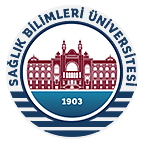ABSTRACT
Supportive use of chemotherapeutic agents after periodontal surgery contributes to wound healing and improves the clinical results decreasing the bacterial plaque accumulation, and postoperative pain and edema. In this study it was aimed to evaluate the macroscopic and histomorphometric effects of various antimicrobial agents administered topically on the experimentally excised wounds which were created on the palatine mucosa of rats in comparison to a control group. In the study, 84 Wistar rats were included, and a biopsy instrument that had a diameter of 4 mm was used to create a mucosal wound centrally on the palatine. On the experimentally excised defect sites chlorhexidine digluconate (CHX) 1% gel (Corsodyl®), octenidine (Octenisept®), polyhexanide solution (Prontoral®), hyaluronic acid 0.8% gel (Gengigel®) and isotonic saline solution in the control group each was used for one minute on every day. Defect diameters were detected on the 3rd, 7th, 14th and 21st days of histomorphometrically created wounds of sacrified rats. The mean distance between defect margins was significantly reduced in both the experiment and control groups in time. The most statistically significant reduction in defect diameters was achieved in the polyhexanide solution (Prontoral®) group (p<0.001). Tested oral agents showed no negative effects on wound healing when administered on the excisional wound site, and a best wound healing was achieved with polyhexanide solution. In conclusion topical applications of antimicrobial agents do not disrupt the healing process in the donor area, and they can be used to contribute to the healing of the surgical site.



